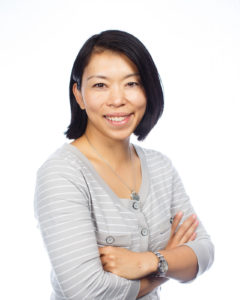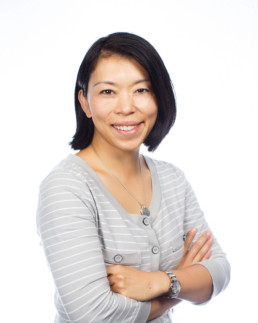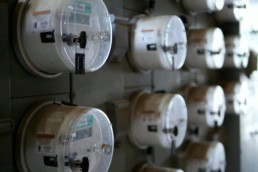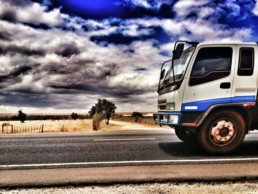$100 Million from Elon Musk Won’t Enable Carbon Capture
By Brentan Alexander, PhD; Chief Science Officer & Chief Commercial Officer
Last Thursday, Elon Musk announced (in well under 140 characters) his intention to donate $100 million to the “best” carbon capture technology, chosen through a competition whose details and judging criteria are yet to be announced. Musk promised further details next week. The problems holding back the mass deployment of carbon capture technology are primarily economic. As such, funding for research and development of carbon capture technologies is most welcome, and Musk’s donation will surely lead to technological advances. However, a Silicon Valley mindset like Musk's, one that champions disruptive innovation as the solution to all problems, is the wrong fit for this important industry.
One difficulty with carbon capture technology is that uses for its recovered CO2 are still limited. The predominant usage today is in enhanced oil recovery, a process that increases oil reservoir yields by injecting CO2 into the well. Multiple other commercial uses are in development, but until there is an offtaker willing to purchase CO2 at scale, projects are having a hard time gaining traction with capital investors.
Those investors are direly needed, however, because carbon capture technology is costly. For example, separating CO2 from the emissions of power plants or industrial facilities (e.g. Petra Nova in Texas) doesn’t happen spontaneously: it takes loads of energy. Separating CO2 from air (e.g. Carbon Engineering) is more costly still because the CO2 is thinly dispersed, making up only 0.04% of the air we breathe. Then on top of the expensive power needed to perform the separation, the equipment itself is still extremely expensive. Even as equipment costs come down, no technological advancement can overcome the laws of nature and make this process free.
Proposals to avoid the need for complex equipment by utilizing kelp, trees, soil, and other natural processes to capture and sequester carbon face the usual challenges associated with funding, creating, and managing forests or farms, but with the additional challenge that the true efficacy of these potential carbon sinks is still widely debated.
Whether the technology performing carbon capture is chemical, biological, or otherwise, somebody has to buy the resulting CO2 or otherwise incentivize its capture and sequestration to make the upfront and ongoing costs worthwhile.
To find markets for the captured carbon, some are looking at chemically converting CO2 into high-value products, like carbon nanotubes. The downside of this approach is scalability: the most attractive products hold high value precisely because they are hard to make or have small and limited markets. As one scales up carbon capture technology to impact climate change, the sheer quantity of produced material would swamp the niche markets for these high-value products, cratering prices and undermining the original business case.
A more scalable solution aims to create a circular economy wherein CO2 is used to make fuels; the kerosene used by Musk’s SpaceX could be made this way. Even here, however, fundamental laws of thermodynamics show that the energy input required to convert CO2 into chemicals or fuel is higher than the energy available in the products themselves. For an idealized system that converts CO2 and water into gasoline using only exactly as much energy as ends up in the fuel, the cost of the energy to perform the conversion would be $3.69 for each gallon of gasoline produced, assuming electricity at 10 cents per kilowatt-hour. It’s physically impossible, no matter the advancement of technology, to use less energy to synthesize that fuel. Real systems aren’t 100% efficient, and further, add in the cost for maintenance, overhead, water, energy for the CO2 separation from its source, and financing costs for the equipment to do all this work, which leads to still higher costs per gallon produced. Competing against cheap fossil fuels on a dollar for dollar basis is nearly impossible.
The only durable solution that enables the scaling of carbon capture technology is a regulatory regime that makes it more expensive to emit CO2 (through taxes, fees, or otherwise), that pays companies to capture CO2, or that does some combination of the two. Thankfully, some of these tools are already in place. Just weeks ago the United States Internal Revenue Service (IRS) finalized its rules for a program colloquially referred to as 45Q, a tax credit that provides projects with up to $50 per metric ton of CO2 stored underground. The California Low Carbon Fuel Standard (LCFS) provides credits to facilities that capture and store CO2, with the value of the credit floating based on a mandated trading market and the number of granted credits dependent on the overall carbon intensity of the process. Similar programs exist in the Pacific Northwest and a federal program is under development in Canada.
These programs are not enough. 45Q is temporary and will expire in a few short years. The LCFS program has limited scope and jurisdiction, and its market would be quickly overwhelmed if carbon capture reaches scale. But these programs provide mechanisms to help support the burgeoning industry today and provide blueprints for new programs in the future. The solution to carbon capture deployment lies in expanding financial programs like these to provide further incentives to technology developers.
Carbon capture today looks a lot like solar technology did 20 years ago, when it was on the brink of growing 500x over the next two decades. Research and development money did not unlock the solar market at the turn of the century; rather it was the emergence of a viable business model driven by mandated renewable energy targets that allowed solar to rapidly expand and run down the cost curve, driving further growth. Carbon capture is ready to make that jump.
Musk’s prize will surely help some firms further their technology and reduce their costs, but Silicon Valley-type solutions won’t create the market that unlocks carbon capture. Instead, carbon capture is ready for Wall Street and Capitol Hill. It will take the deployment of today’s technologies supported by billions of dollars in incentives and investment from governments, banks, and corporations to demonstrate the much-needed business case for carbon capture and truly enable it to scale.
###
Interview: Audrey Lee, PhD, Clean Energy Senior Executive
We are inspired by people who are passionate about technology that solves pressing global challenges. In this interview series, our chief actuary, Sherry Huang, talks with friends of NER whose work makes a difference, and whose journeys will inspire you, too.
This interview has been lightly edited for clarity.
I first ‘met’ Audrey through a few shared online interest groups. One day I saw that she had posted about being a co-chair of Clean Energy for Biden. (I subsequently found out that Matt Lucas, NER’s managing director of business development, is also involved in the same organization.) This piqued my interest, and I then learned that Audrey has an impressive background with a wealth of diverse experiences. She has done everything at work from scientific research, policy and regulation, big data and analytics, product and market development; she is now a Board director for ArcLight Clean Transition Corp, a special purpose acquisition company with a focus on sustainability and clean energy. I spoke with Audrey on the eve of Election Day with great anticipation. Audrey is personable, open, driven, and enthusiastic about the work she is doing to promote the clean energy sector.
When did you first start working on energy-related technologies? Was there a pivotal opportunity or individual who led you to working in the renewable energy sector?

I first discovered energy policy in graduate school while struggling with my PhD in electrical engineering. I took classes in public policy with Professor Denise Mauzerall at Princeton and I loved how directly impactful to society it is. Professor Valerie Thomas was also an early believer in me and she helped give me a lot of confidence. When I graduated, I joined the Department of Energy through a Presidential Management Fellowship. I highly recommend that program, which targets recent graduates with an advanced degree for federal government public service. At the DOE Policy Office, under the guidance of Carmine Difiglio, I found a way to be the bridge between the technical analysts and modelers at Brookhaven National Lab and White House policy decision-makers.
Can you tell us about the most rewarding project that you worked on in the last few years? Between being an advisor to the California Public Utilities Commission, running Sunrun’s Energy Services group, and co-chairing the Clean Energy for Biden initiative, I am sure it’s hard to talk about only one!
I love proving that something new can be done. At Advanced Mircrogrid Solutions, we replaced fossil fuel power plants with an aggregation of batteries at customer sites. With Sunrun, we entered the ISO-NE capacity market with the aggregation of rooftop solar and batteries. Most recently, it has been great to be involved in Clean Energy for Biden – a volunteer organization – and witness the impact that we made from hundreds of active volunteers and 10,000 members.
Tell us a little more about the Clean Energy for Biden initiative.
We have three goals: fundraise, get out the vote, and provide policy recommendations. We leverage diverse skills of volunteers, across the country with more than 30 state/regional/affinity teams. Check out the upcoming policy summits on November 16 (4-6pm PT) and November 23 (4-5:30pm PT):
https://www.cleanenergyforbiden.com/policysummit
Do you have any advice for women who are pursuing a STEM career, who wish to maximize their impact using their backgrounds and skills?
Personally, my education in applied physics and electrical engineering provided a good foundation. I would encourage women to explore, talk to people, and understand the problems they are trying to solve. I’ve always loved learning from other people – including from my own family. My Dad is a physicist, and my mother is an entrepreneur. My general advice is never be too comfortable; ask yourself how can I learn more, how can I apply a quantitative, analytical approach to solve a problem.
Which areas require the most work in advancing clean energy solutions? Policy/regulation, innovation in technology solutions, or private investment?
Many technology solutions are economically competitive for clean energy already, and private investment, such as ArcLight, is ready to deploy investment and reduce the cost of capital. On the technology innovation front, we need more technology solutions for negative emission, such as carbon capture, to help achieve a rightfully aggressive clean energy goal of net-zero emissions by 2050. I think we have the most need for policy at this moment. Policies that set the rules of the game, set mitigation goals, and let competitive technologies and market solutions participate. Such policies can go hand in hand with economic recovery as more jobs are created in the clean energy sectors.
Thank you, Dr. Lee, for talking to me for this interview series!
###
One Small Step for Torrefaction, One Giant Leap for the Bioeconomy
Commissioning of the US’s first commercial torrefaction facility is a milestone in its own right, and a potential game-changer for the bioeconomy’s inroads against fossil fuels
By Matt Lucas, PhD, Managing Director, Business Development
Moonshine: It might not sound synonymous with the bioeconomy, but at a massive scale, the fermentation of traditional sugar to create ethanol was where the bioeconomy got its start. Leaving behind tasty feedstocks and inebriating bioproducts until happy hour, today we see that the bioeconomy includes a growing and wide variety of feedstocks, processing technologies, and products. Importantly, when the feedstocks are cost-advantaged wastes that are converted into value, the bioeconomy is good for both commercialization and environmentalism.
One processing technology of the bioeconomy is torrefaction, a member of the trifecta of dry thermochemical waste processing technologies, which also includes gasification and pyrolysis. With the completion of the Restoration Fuels (RF) commercial scale torrefaction facility in Grant County, OR, the US now has a complete set of all three technologies in or nearing commercial operation. Each process has its own strengths and weaknesses, but all of them are important contributors to a new wave of bioeconomy innovation.
What is torrefaction?
Torrefaction is a thermochemical process where organic material feedstock (“biomass,” e.g. wood chips) is heated in the absence of oxygen to drive off water and volatile organic compounds (VOCs). The VOCs are burned to provide process heat, but the vast majority of the feedstock’s mass remains in solid form and exits the process as the product. The product, termed “bio-coal,” is more energy dense than biomass, is hydrophobic (important for shipping and storage), and is far more resistant to rotting (important for storage). Bio-coal is used as a drop-in replacement for coal as a global energy source, more on this below.
Torrefaction’s thermochemical counterpart, gasification, instead applies an oxidant to the feedstock so that most of it converts to a gaseous product stream. (Gasification makes gas, go figure.) The other counterpart, pyrolysis, uses the same oxygen-starved environment as torrefaction but typically operates at higher temperatures to drive further reactions that convert more of the feedstock to gases and liquids. (The meaning of pyrolysis is “pyro” for heat and “lysis” for break down. Incidentally, to torrefy means to roast, so I like to loosely think of torrefaction as the slow-cooker barbeque in the bioeconomy kitchen.)
What happened?
In 2019, the RF commercial-scale torrefaction facility started operations. The facility is co-located with an existing lumber mill. It processes forest residues from a forest restoration project on public lands, making use of what would otherwise be wasted or what would become a wildfire hazard. This is the first commercial-scale torrefaction facility located in the US.
The project had been a long time coming. It originated from the Consortium of Advanced Wood-to-Energy Solutions, a public-private partnership between the US Forest Service and the US Endowment for Forestry and Communities, a non-profit. The Consortium supported bio-coal production for a test campaign at Portland General Electric’s Boardman power plant.
Bio-coal as a coal substitute?
The bioeconomy has long been making inroads as a source of fossil fuel substitutes. Ethanol displaced gasoline (within limits). Biodiesel displaced diesel (within limits). Then renewable diesel came along to displace diesel entirely (without limits). Also, various biofuels can blend into the aviation fuel supply. Finally, let’s not forget renewable natural gas, which displaces fossil natural gas.
But throughout this bioenergy revolution, coal remained untouched. And that makes some sense. Coal is cheap and already losing ground to other fuels, so why chase a replacement for the lowest-margin product in a declining market? However, there actually are compelling reasons to pursue bio-coal. The coal-fired power generation fleet in much of the world is still young and critical to national grids. There are calls for a just transition from coal, which means prioritizing workers and keeping their jobs. A drop-in replacement, bio-coal, lets that happen, but also allows for these fleets to be an integral part of the energy transition. RF’s new facility takes advantage of this upside.
Lessons learned
Although it was ultimately successful, the reality is that RF had a tough time getting to market. What lessons can we learn? New Energy Risk’s products and some more general lessons from project financing could help for future projects:
- No offtake: RF didn’t have a long-term purchase agreement to enable project financing of their facility. For new products where market demand is not yet clear, it can be tempting to build an entirely merchant project. If possible, it is more desirable to establish market demand and a fit between your product and your customers’ specifications at sub-scale before the big dollars are at risk. Fortunately, subsequent torrefaction projects are securing letters of interest from overseas utilities for bio-coal, so we feel hopeful about the potential for creditworthy offtakes to support future projects.
- Minimal scale: RF can process 100,000 tons of feedstock per year, which is modest for a bioeconomy facility. Thermochemical processes almost always see improvement in capital efficiency at larger scale, so a larger facility would likely have been cheaper. RF has stated that part of their thesis is to match facility size to the local forest residue resource, so they targeted a smaller facility near a smaller forest. Luckily, there’s an opportunity to co-optimize facility sizing and location with forest restoration contracting. New Energy Risk’s insurance solutions can facilitate the technological and financial de-risking required to unlock larger capital projects.
- Feedstock uncertainty: The site that hosts the RF facility almost shut down in 2012 owing to a lack of wood fiber from the public forest lands in the area. The need for certainty in a long-term feedstock supply is critical to project financing. New Energy Risk is developing insurance solutions to help mitigate feedstock risk.
At New Energy Risk, we’re excited to see the trifecta of dry thermochemical processes—gasification, pyrolysis, and torrefaction—reaching commercial scale to support the waste-to-value and bioeconomy sector. These projects are even more impactful when the feedstock comes from forest restoration, both reducing the risk of wildfires in the forest while creating bioenergy and bioproducts. It’s an uncommon win-win for forest managers, coal workers, and environmentalists alike; may they celebrate together with a glass of moonshine and a toast to the future of the bioeconomy.
###
Trump Embraces Corn Ethanol As The Election Draws Near
By Brentan Alexander, PhD; Chief Science Officer & Chief Commercial Officer
Reports surfaced recently that President Trump had directed the U.S. Environmental Protection Agency (EPA) to reject a series of applications for biofuel waivers submitted by U.S. oil refiners, and on Monday the EPA confirmed the action. The move is the latest, and likely last, development in a major drama that has pitted traditionally red constituencies against each other, with farm states battling against big oil. For most of this presidency, the Trump administration has sided with the oil lobby and granted relief from biofuels mandates, but with an election year upon us, the president’s allegiances have shifted.
The regulation at the center of this dispute is known as the Renewable Fuel Standard, or RFS. Established by law during the last Bush presidency in 2007, the program was developed during an era of falling U.S. oil production as a strategic initiative to ensure domestic energy security. As esoteric as it may seem, the regulation underpins an ethanol industry that generated more than $46 billion in revenues in 2018 alone. Since ethanol is produced from corn, the RFS directly supports farm economies across the U.S. Midwest, with the bulk of production centered in Iowa and the surrounding states.
The RFS has few fans in the oil industry however, as the program adds compliance costs and overhead. When the regulation was passed, the oil lobby secured a waiver program in the legislation, allowing small refiners to obtain exemptions from biofuels mandates. Under the Obama administration, few waivers were issued. But once Trump came into office, the floodgates opened and over 30 waivers were granted in the first two years of the administration, including to large refiners. Biofuels mandates for other refiners weren’t increased to compensate, and ethanol prices fell steeply. By 2019, the value of the ethanol credit (known as a ‘D6 RIN’) had collapsed to just a quarter of its value from two years earlier, its lowest level since 2013.
The battle was on: Chuck Grassley (R-IA) attacked the EPA, saying the organization had “screwed us.” Lobbyists for farmers and ethanol producers unloaded criticism on administration officials. Lawsuits were filed to challenge the validity of the waivers. Ethanol producers closed facilities and went out of business. Throughout this process, the Trump administration tried to mollify corn growers and made various promises to farmers. The promises, however, turned out to be hollow and the administration failed to deliver. It seemed as if farmers and ethanol producers were on the losing side of the fight.
Then the courts stepped in. In January of this year, the U.S. Tenth Circuit in Denver sided with the ethanol industry and ruled that the Trump EPA exceeded its authority in issuing the waivers. Soon after, the government signaled it would not appeal. The oil industry, incensed, wasn’t ready to accept defeat. They noted that the court’s decision didn’t invalidate the EPA’s ability to issue waivers entirely: The court held that the EPA maintained the authority to grant waivers, but only as extensions to waivers already issued. Oil refiners quickly filed a series of retroactive waiver applications, 68 in all, to provide the necessary chain to pass legal muster.
They didn’t stop there either. The oil groups opened a second flank in the battle by petitioning the U.S. Supreme Court to review the lower court’s decision. They did this despite knowing that the strategy is highly unlikely to succeed, given that the defendant in the suit, the EPA, has not joined their brief or filed an appeal. Beyond these near-term battles, a larger conflict looms: legislated quotas under the RFS expire at the end of 2022. At that point, the program will still technically exist and the EPA will still be required to set quotas, but with no mandates specified in law. Lobbying from both sides will aim to shore up or eliminate the RFS prior to the expiration. Should Congress fail to act, expect more lawsuits.
But for now, farmers have gained the upper hand. The decision by Trump to deny the 68 retroactive biofuels waivers has put a final, permanent end to refiner’s strategy of undermining the RFS through mandate waivers. Their next hope is that the EPA sets low volume requirements for 2021, but with an election looming and support for Trump dipping across the Midwest, the president has bet that backing farmers across states like Ohio, Minnesota, and Wisconsin is good politics. He has turned his back on the oil lobby his administration originally supported, and for now, the RFS lives on.
###
Interview: Connie Joe, Corporate Social Responsibility Officer, Bank of the West
We are inspired by people who are passionate about technology that solves pressing global challenges. Scaling and commercializing those solutions requires serious knowledge, courage, perseverance, and support systems like those who work in the insurance industry. In this interview series, our chief actuary, Sherry Huang, talks with friends of NER whose work makes a difference, and whose journeys will inspire you, too.
This interview has been lightly edited for clarity.

Connie and I met through our kids and we are in the same book club. We seldom discuss work when we meet (our kids are usually in the way!), but recently we realized our work has some common ground. Connie is the Corporate Social Responsibility (CSR) officer at Bank of the West, while I work on an insurance team that supports commercialization of sustainable, breakthrough technologies. After spending some time talking to Connie, I realized we have more professional commonality than I thought! We both work to enable innovative new ventures using the platform of traditional industries, and we each enjoy the aspirational part of our jobs, making a difference for our partners and the world.
Connie, you are always so enthusiastic about your job! Tell us about what you do at Bank of the West.
As a CSR officer at Bank of the West, my role involves setting up and implementing governance guidelines for various mission-driven programs that align with environmental, social, and governance (ESG) initiatives at the company. Along with others on my team, we work on programs that span from community outreach, to governance for new sustainability-related requirements (e.g. no coal business by 2030), and we partner with others in the company to grow new business portfolios such as our Energy Transaction vertical. Both Bank of the West and its parent company, BNP Paribas, have a strong focus on sustainability and a commitment to social issues, striving to be the bank for a changing world.
How do you measure success at work and what are some of the challenges you and your team face?
Our group goal is aligned with the company’s mission to become a leader in sustainable banking. We measure our success by monitoring and reporting on our annual CSR plan. Balancing the cost and benefit of implementing the right mission-driven programs and managing missed opportunities is something that I think all of us have to work with from time to time.
What parts of your job excites you the most?
I sincerely love being able to make a positive difference as the core part of my job. It gives me great satisfaction to know that my role plays an integral part in making sure that we are only financing companies that are supporting energy transition. Bank of the West also has some innovative sustainable financing programs that support energy transition for retail consumers. For example, our ‘1% for the Planet’ debit account provides a carbon footprint tracking tool for every purchase made with the debit card and will donate 1% of revenue to environmental nonprofit partners. I am also proud that Bank of the West is one of the few US banks that has a CEO who is a minority woman!
How did you get to where you are today?
I studied biology in college and started my career as a consultant at Accenture with a focus on public health. Starting out in consulting was a great experience – I loved the goal-oriented, clear-path environment that allowed me to grow exponentially. I decided to move away from consulting after starting a family and got more involved with process and program management. I took a chief of staff position at Bank of the West that enabled me to return to community development through working on the Community Reinvestment team, which eventually led me to the CSR team today.
Did you have a mentor who helped you shape your career?
Yes, I have been lucky to have mentors that have helped me grow and navigate my career. One of my mentors is famous for promoting women into positions that were stretch roles. He constantly challenged us to never become too comfortable in our roles and demonstrated to me how important it is to have an executive who can see your potential before you can. Another mentor was instrumental in supporting [me when I was] finding my way back to working in community development. Her support during my career pivots, even if it was not the easiest path to her organization, allowed me to begin and grow my career in the CSR area.
Thank you, Connie!
###
A Unanimous FERC Decision Saves Net Metering
By Brentan Alexander, PhD; Chief Science Officer & Chief Commercial Officer
A much-hyped petition to the Federal Energy Regulatory Commission (FERC), which sought to end net metering on customer-side rooftop solar energy in the United States, was put to an unceremonious end last week. FERC commissioners unanimously voted to dismiss the petition. Submitted in April by a secretive group calling themselves the New England Ratepayers Association (NERA), the petition raised alarm bells across the solar industry, with some actively questioning whether FERC’s response to the petition would be a fait accompli. Yesterday’s dismissal alleviates those fears and saves net metering, but the future of the popular program remains uncertain.
Net metering began in the United States over 40 years ago as a way to compensate small-scale wind and solar owners who wanted to use the electricity generated by their systems at different times of day. Since solar panels only generate power when the sun shines, a consumer may end up producing too much electricity during the middle of the day and too little in the evenings and at night. Net metering solves this problem by paying the consumer retail rates for their excess electricity during one portion of the day to offset the costs of power when the sun isn’t shining. This simple mechanism became the bedrock of solar policy across the United States, helping to enable the incredible growth in residential solar installations across the country.
Net metering policies are set at the state level, and this patchwork creates different regimes in different jurisdictions. The petition before FERC sought to preempt state rules with federal oversight, and the fear among solar proponents was that a fossil-friendly administration would effectively shut the programs down. After NERA filed its petition, there was immediate speculation that the shadowy group was funded by utilities, who have traditionally viewed net metering as a threat to their bottom-lines and fought expansions of the program. When many stayed silent on the petition itself, that speculation grew and later reporting identified a link.
Utilities have fought net metering because it costs them money. When a solar customer is paid retail rates for their excess electricity production, the utility is paying a significant premium above the wholesale power rates it pays to commercial producers. Many have argued this is worthwhile policy, as it incentivizes cleaner means of production, but others have countered that the program is unfair and forces utility customers to subsidize the solar panels on other roofs. Some go as far to argue that net metering is essentially a form of regressive taxation, with the beneficiaries tending to be higher income.
But net metering has another, more existential, problem: Bundled into a significant portion of retail electricity rates are costs unrelated to the production of electricity, including grid management and maintenance. When solar owners are compensated for extra power at the retail rate, the utility loses out on revenue it needs to maintain the wires. At small penetrations of solar, this loss is manageable, but as solar installations grow, utilities can find themselves serving clients who pay less in utility bills than it costs to keep service going to those homes. As a result, net metering can’t scale; at some point, customers need to pay (more) to maintain the grid.
Already, states have pulled back from net metering, including some at the leading edge of solar and renewables deployment. Hawaii, perhaps the clearest example, eliminated net metering in 2015, despite maintaining a 100% renewables goal by 2045. In its stead is a more complex system wherein solar customers are paid for the excess power at less-than-retail rates. Permits for installs quickly began to tumble. Other states have enacted distributed solar caps, and once a cap is hit, net metering is no longer available for new solar customers. Illinois hit its cap earlier this year, starting a process to transition away from net metering programs. Phaseouts have occurred in Arizona, Connecticut, Indiana, Kentucky, Michigan, and New Hampshire.
For those considering a solar purchase, the time may be now. Most programs grandfather in those lucky enough to interconnect while net metering remains in place, and the impending roll off of the federal investment tax credit adds further motivation. FERC has taken the threat of an immediate net metering cancellation off the table, but expect more phaseouts as solar continues its explosive growth. Net metering programs won’t be around forever.
###
A Renewable Future Is on the Horizon
By Brentan Alexander, PhD; Chief Science Officer & Chief Commercial Officer
Dominion Energy, one of the largest utilities in the United States with over 7 million customers across 18 states, recently announced that it was shedding a large portion of its natural gas portfolio to Berkshire Hathaway, including the largest storage site in the United States, while cancelling plans for a controversial pipeline project in Appalachia. The sale, worth almost $10 billion, transfers vast gas storage and transport holdings and refocuses Dominion’s activities on the regulated electricity sector. The company, not generally known as a leader in clean or renewable technologies, has in recent years begun a concerted effort to restructure its generation portfolio to cleaner sources in its home market of Virginia.
This sale represents yet another sign that a renewable future, nearly free of fossil fuel influences, is closer than many would have imagined possible just 10 years ago. It’s also a strong signal that public policy works and is imperative in driving this change.
At first glance, these asset sales seem to fall in line with much of Dominion’s recent activity: Dominion regularly touts on its website and press releases the renewable bona-fides of the company. Since 2013, the company has deployed 1.8 GW of solar across its territory, and is expecting another 16 GW by 2035. It recently announced its desire to develop the first offshore wind project along the mid-Atlantic coast, and has begun site surveying work, hoping to install over 5 GW of offshore wind in the next 15 years. But Dominion’s renewables focus didn’t come along by itself.
In 2018, Democrats took control of the Virginia government for the first time in decades. Quite suddenly, Dominion found that a regulatory environment it had readily dictated was suddenly out of its control. Within two years, the state of Virginia had passed regulations requiring Dominion to be 30% carbon-free by 2030 and 100% carbon-free by 2045. All coal plants are required to be shut down by 2024. Dominion, long accustomed to its fossil-fired fleet, with minimal renewables in its portfolio (about 5%) compared to its peers, has suddenly been forced to dramatically alter its generation business.
Despite its supposed renewables focus, Dominion has routinely sought to develop more natural gas power generation. The utility has brought nearly 10 GW of gas power online since 2010 and had plans to add 3.6 GW more by 2035. Only 5 GW of new solar was proposed in that same timeframe. Virginia, however, pushed back on the proposal. For the first time in generations, Dominion found that its plans were not rubber-stamped by regulators. Forced back to the drawing board, Dominion returned with the more focused renewables plan they promote today. This came begrudgingly, and Dominion is now seeing the writing on the wall: Its gas business is simply not a business of the future. It consequently made a decision to get out now and refocus the company on its regulated utility business.
Where Virginia hopes to nudge Dominion, in California the stronger push of regulators to transform electricity supplies shows how much more is possible. For example, on June 28, California notched three consecutive hours with over 90% of its grid powered by renewables, predominantly solar and wind. Three hours may seem like a small period, but it is stunning that the California Independent System Operator could reliably fold in such a high concentration of renewable assets to the world’s 5th largest economy during the peak of the day. It was not long ago when the near-universal consensus was that such a high utilization of renewables was impossible and would lead to a fundamental destabilization of the grid. California policy makers continue to urge its utilities forward, and greater renewables penetration is expected in the months and years ahead as a result.
Dominion’s gas asset sales will help enable the utility’s transition into the future. Without as many gas assets to maintain and support, Dominion will be freer to move away from fossil sources, as legislation demands. That future won’t appear tomorrow, and eliminating gas from the Dominion portfolio may take decades. Unlike California, Dominion isn’t (yet) looking to turn off gas peaker plants and replace them with solar and storage. But California utilities weren’t aiming for that five years ago either. Change takes time and Dominion has taken another undeniable step forward. It’s a welcome sign for all who look forward to a cleaner future.
###
Sunrun’s Vivint Acquisition Creates the Leader in an Evolving Residential Solar Market
By Brentan Alexander, PhD; Chief Science Officer & Chief Commercial Officer
Sunrun’s nearly $1.5 billion all-stock acquisition of Vivint Solar, announced today and expected to close later this year, creates an undisputed king in the residential solar space. The combined company, valued at over $9 billion, will control over 15% of the residential solar market. Its closest competitor, Tesla, claims just 6% of the market; its solar business entered free fall after it acquired the one-time leader SolarCity despite its troubling financial outlook (which led to shareholder lawsuits). Sunnova, another competitor that went public just over a year ago, is valued at only $1.6 billion, a fraction of Sunrun today. A combined Sunrun and Vivint represents the largest consolidation in the residential solar market to date and sets up Sunrun to lead the sector as it grows and matures.
The Search for New Roofs
The residential solar business model requires finding vast numbers of new customers looking to put solar on their roofs, compelled by the promises of utility bill savings. Installers expend significant resources on sales and marketing teams that, in many cases, go door-to-door to sign up new customers. Now with most early-adopters off the market, companies are hungrily hunting for new customers. But some approaches to customer acquisition have floundered. For example, when Tesla moved to an online-only approach and abandoned targeted sales activities, its market share collapsed.
For the past half-decade, growth has been enabled by the rapid fall in prices for solar equipment combined with rising utility rates. As prices dropped, houses that previously presented uneconomic value propositions suddenly became attractive solar targets. Although those trends continue, the impending roll off of the residential solar investment tax credit (ITC), valued at 26% this year and scheduled to drop to 22% next year and 0% the year after, threatens to push business in the wrong direction. The ITC roll off essentially adds cost to the system, tightening margins. COVID-19 hasn’t helped: Tax equity that can monetize the ITC has become harder to find with the large uncertainty in corporate profits.
For many years, Sunrun and its competitors pushed consumers towards a lease option, wherein the solar company would finance the cost of the equipment and guarantee an electricity rate for decades, usually 20 years. Homeowners would get power with little to nothing upfront, and all maintenance would be handled by the lease provider. The industry has been shifting in recent years as more homeowners have sought to buy systems outright and capture more of the value created by their systems. To avoid being squeezed, Sunrun and others have responded to these changes by offering financing options to buyers and signing up customers for service contracts to maintain their systems.
It’s a cutthroat business that favors those with more efficient customer acquisition strategies and access to cheap capital. Sunrun’s appetite for Vivint seems squarely aimed at improving their standing on both fronts, boosting margins and allowing Sunrun to outrun competition. Sunrun estimates that the combined company will realize $90 million in “cost synergies,” lowering the cost of customer acquisition. Further, Sunrun Executive Chairman Ed Fenster noted on an informational call that they expect the combined company to more effectively and efficiently raise capital to support their operations. Offering leases and financing options depends on access to low cost capital (and tax equity while the ITC remains in place), and the larger Sunrun should have an easier time finding cash.
An Evolving Revenue Model
This Sunrun deal also sets up well for the long-game: At some point many years out, there won’t be enough open roofs with sufficient solar resources to justify further solar deployments, and costs to acquire new customers will jump. As a result, Sunrun’s grid services business is likely to grow in importance. By building to ensure there are gigawatts of distributed solar and storage under management, Sunrun will be positioned to control storage systems and supply electricity to the grid on command, a valuable grid management service.
Sunrun (and its competitors) have rushed to enable this market by offering battery storage options for customers as part of the solar system pitch. Rolling “public safety” outages in California and the Coronavirus pandemic have helped whet customer appetite for resilient systems. Unlike a standalone solar system, battery storage devices require another level of oversight and control. When should the battery by charged and discharged to maximize customer benefit and unit life? How can a customer ensure their storage device is ready to supply electricity to the grid in times of high demand?
The packaging of distributed assets into so-called “virtual power plants” has only started recently and is still in its infancy; startups focused on algorithms to dispatch these assets abound. Sunrun has already started to dip its toe into this game. They announced their first wholesale contract with a grid operator in early 2019, are now working to utilize their assets in California to replace a gas-powered spinning reserve power plant in Oakland, and recently reported $50 million in near-/final contracted revenues associated with grid services (although a small fraction of the top-line, to be sure).
Competing in the grid services game requires scale. The more assets you have to manage, the more power you can pump on or off the grid, and the more value you can capture from grid services. Which brings Sunrun back to their current primary business: customer acquisition. The more customers Sunrun acquires today, the more they enable their grid business tomorrow.
Navigating the Rough Patch
The last six months have been a wild ride for the residential solar space. Business during the first quarter of 2020 was up for Sunrun, with year-over-year installations growing 13 percent. By the end of March, things had cratered along with the economy: business was down 40 percent. Sunrun and its competitors, heavily dependent on in-person marketing techniques, began furloughing or laying-off workers and preparing for a very different future. 72,000 jobs were lost across the sector as a result. Online sales systems were spun-up on the fly and contactless acquisition processes were rolled out. Business has ticked back up recently, but is still far below the levels projected at the start of the year. Estimates are that demand will be lower than pre-pandemic levels for the foreseeable future.
Vivint was especially reliant on door-to-door sales methods to grow its business, a model ill-suited for the current moment. However, Sunrun’s acquisition of Vivint is as much about surviving the current moment as it is about prepping for the future. Although some relief may come from Congress, where House Democrats have raised the prospect of an ITC extension, Sunrun is preparing for an uncertain future in which the old rules of customer engagement are essentially against the law. By combining forces, Sunrun and Vivint get a larger megaphone from which to advertise digitally, and the ability to scale up targeted in-person marketing across a variety of distribution channels when lockdowns ease.
For now, both Sunrun and Vivint are sounding a confident note, highlighting their combined strength and painting an optimistic future together. Wall Street (not always the best judge of things) seems to agree, with both Sunrun and Vivint stock up considerably today given the news. Tesla, Sunnova, and others are surely taking note. When the transaction closes, the larger Sunrun will be the undisputed leader in residential solar, evermore ready to rise.
###
California’s Electric Truck Mandate Looks to Address Social and Environmental Injustice
By Brentan Alexander, PhD; Chief Science Officer & Chief Commercial Officer
For those fighting climate change, electric cars are often seen as an impactful (and conspicuous) choice to move away from fossil fuels. Tax credits at the federal level and further incentives in many states have helped make Tesla a household name. Competitors new and old, including Rivian and Ford, have announced new electric vehicles for the consumer market in an effort to keep up. Trucks, however, produce far higher levels of harmful pollutants and CO2, and their impact is felt more acutely in minority communities. These facts have led policymakers in California to once again show leadership on environmental and social justice: By 2045, every new truck sold in California must be zero-emissions.
Trucks represent just under 7% of vehicles in California, but the California Air Resources Board (CARB) reports that truck emissions make up a disproportionate 70% of statewide smog-causing NOx and 80% of cancer-causing soot from the vehicle sector. This is true even though California has some of the world’s strictest emissions regulations for medium and heavy duty trucks, such as the state’s clean idle requirements.
Truck pollution impacts are also not evenly distributed. Medium- and heavy-duty truck traffic is heavily concentrated in major arterials, ports, and logistic centers, which tend to be in closer proximity to low-income neighborhoods. The health impacts on minority communities, particularly the hispanic and black communities, is well documented. One Google-run study performed with the support of the Environmental Defense Fund (EDF), found that pollution levels in a historically black community near the Port of Oakland fluctuated by many multiples over just a couple of blocks, with levels significantly higher near highways and major thoroughfares.
A transition to zero-emission trucks provides a unique opportunity to help right multiple wrongs at once. Climate change is slowed through the reduction in CO2 emissions, smog is reduced through a drop in NOx, cancer is reduced by lowering soot in the air, and the benefits flow most heavily to traditionally marginalized populations. It’s climate justice, environmental justice, and social justice all wrapped up in one.
The major players are lining up to support the change. Utilities up and down the west coast are planning charging infrastructure to support electric trucks, legacy semi-truck manufacturers are getting in the electric game, and new entrant Nikola is watching its stock price soar.
There will likely be the same tired lawsuits and bad-faith arguments about increased costs for consumers. Some may present the negative environmental impacts of battery manufacturing (which are legitimate, but much smaller by comparison). The Golden State, however, refuses to ignore the real costs of pollution and global warming that are paid inordinately by minority communities. As has been the case for decades, California is once again setting the standard for others to follow.
###
Congress Is Mulling Renewable Energy Stimulus: They Should Think Bigger
By Brentan Alexander, PhD; Chief Science Officer & Chief Commercial Officer
With discussions in the U.S. Congress underway on the makeup of a ‘Phase 4’ coronavirus stimulus package, multiple reports are identifying clean and renewable energy as a key sector that Democrats hope to support. Although details are still scarce, ideas being floated include extensions of the investment tax credit (ITC) for solar power and other clean technologies, an extension of the production tax credit (PTC) for wind power, and the temporary conversion of these programs to a direct tax refund. These are good starts, but given the scale of the climate crisis and this rare opportunity to engage in direct stimulus, Congress should think bigger.
The clean energy economy is a driver for the U.S. economy and investments in its growth will pay dividends many times over. A University College London study published in late 2019 found that the U.S. “green” energy sector employed nearly 10 million people and generated over a trillion dollars in economic activity. It’s not just blue states benefiting either: Behind California, Texas supports the next largest share of clean energy jobs in the United States. Clean energy provides jobs at all rungs on the economic ladder, and investments in the sector ensure that the U.S. continues to be a leader in global technology innovation (it’s currently ranked 4th). This leadership supports global competitiveness while enhancing our energy security at home. And that doesn’t even take into account the critical importance of halting the climate crisis, which unchecked could cost the United States hundreds of billions of dollars a year by 2090.
Lawmakers don’t need to look far to see what the impact of big ideas can achieve. In the wake of the financial crisis just over 11 years ago, the American Recovery and Reinvestment Act (ARRA) provided significant support for clean energy programs. $400 million was provided as seed funding for the Advanced Research Projects Agency - Energy (ARPA-E), which invests in early-stage research and development across the clean energy landscape. Today, ARPA-E-funded companies have attracted over $3.2 billion in private sector funding and generated 385 new patents. ARRA also expanded the Department of Energy Loan Guarantee Program with Section 1705, specifically dedicated to renewable energy deployments. In two years of operations, the program awarded over $15 billion in guarantees. This funding was used to support the first five utility-scale solar projects in the United States and is credited with kickstarting the domestic utility solar industry. Guarantee funds also supported the buildout of Tesla’s first major car factory in Fremont, California, helping Tesla launch its revolutionary Model S sedan. Many billions of dollars in economic activity and hundreds of thousands of jobs across red and blue states can be directly linked to the ARRA: it had a positive return on investment many times over.
We can again have such an impact, and there is no shortage of big ideas beyond the ITC and PTC to match the scale of this moment. In March, Dan Reicher, the former Assistant Secretary of Energy for Energy Efficiency and Renewable Energy at the U.S. Department of Energy in the Clinton administration, wrote an outline for what a more ambitious clean energy stimulus looks like. A centerpiece of his approach is the Clean Energy Deployment Administration, a program idea that has percolated in Congress with bipartisan support for years and would provide a centralized resource with a full set of financial tools to help new technologies reach market and scale. The Information Technology & Innovation Foundation provided 16 steps that the U.S. could take to stimulate clean energy and manufacturing. Among their proposals is an Energy Technology Commercialization Foundation, modeled after similar foundations linked to the national parks and the National Institutes of Health, that would work closely with the U.S. Department of Energy to accelerate the deployment of clean energy technologies. Former staffers on Governor Jay Inslee’s presidential campaign have launched the Evergreen Collaborative, which offers a detailed action plan to tackle the climate crisis. Their solutions are focused on investments across the political spectrum and in sectors as divers as agriculture, buildings, and technology innovation.
Although these plans differ in key details, arguments about the best climate strategy at this stage is besides the point. What’s important now is to match the scale of the solution to the scale of the problem. ITC and PTC extensions are nice; converting to a refund structure while the tax equity market recovers will be highly impactful. But these ideas are table stakes; What’s needed are new programs to support the next generation of technologies from the lab to the marketplace. Impactful technologies, such as energy storage and sustainable aviation fuels, are on the cusp of breaking through, as solar power was when ARRA was enacted 11 years ago. With federal support for research, development, demonstration, and deployment (known in D.C. as RDD&D), the U.S. can continue to lead on climate innovation while solving one of the great global challenges of our generation.
###









